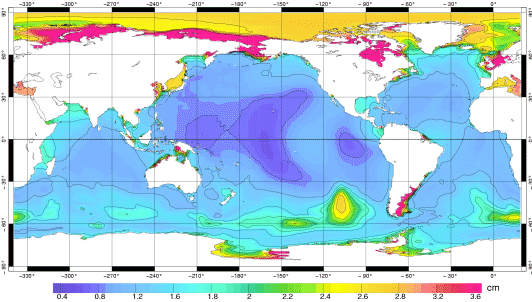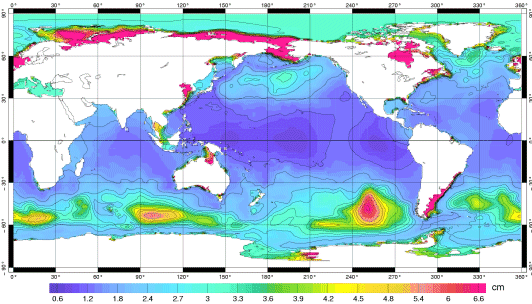Atmosphere puts pressure on the ocean
Image of the month - December 2005
Ocean react roughly as a huge inverted barometer, coming up when atmospheric pressure is low (air weighting less over the surface), and down when pressure rise. In fact, atmospheric pressure and wind effects oppose one another, thus leading to a much more complex ocean response. This effect has a major impact during very low-pressure phenomena (hurricanes especially), when water can rise very high, or during coincidences between high tides and a depression (storm surges).
Moreover, to study ocean circulation, those atmospheric effects must be corrected with accuracy. In order to do this, knowing "only" the atmospheric pressure is not enough to reach accuracy of about one centimeter, since in doing so, pressure's dynamical effects and winds are neglected (and they can have effects as high as 20 cm over the ocean level). To take them into account, and thus contribute to a better use of altimetric and in-situ data, the ocean response has to be modelized.
See also:
- Data: Auxiliary products
- Aviso Newsletter #8: Ocean response to short-period atmospheric and tidal forcings, (pdf), C. Le Provost et al, 2000
Websites on this subject:
References:
- Carrère, L. and F. Lyard, 2002: Modeling the barotropic response of the global ocean to atmospheric wind and pressure forcing - comparison with observation, Geophys. Res. Lett., 30, 1275.






